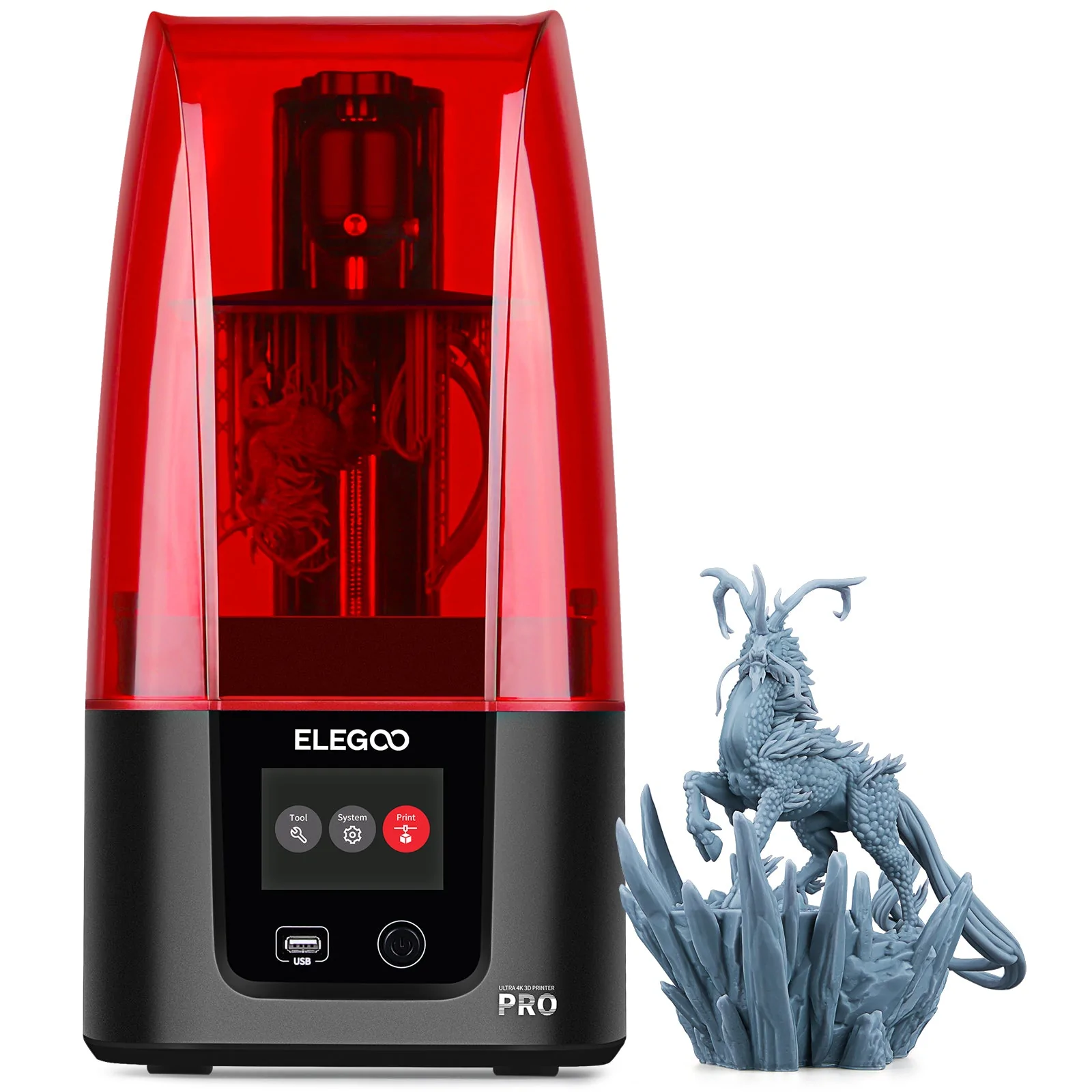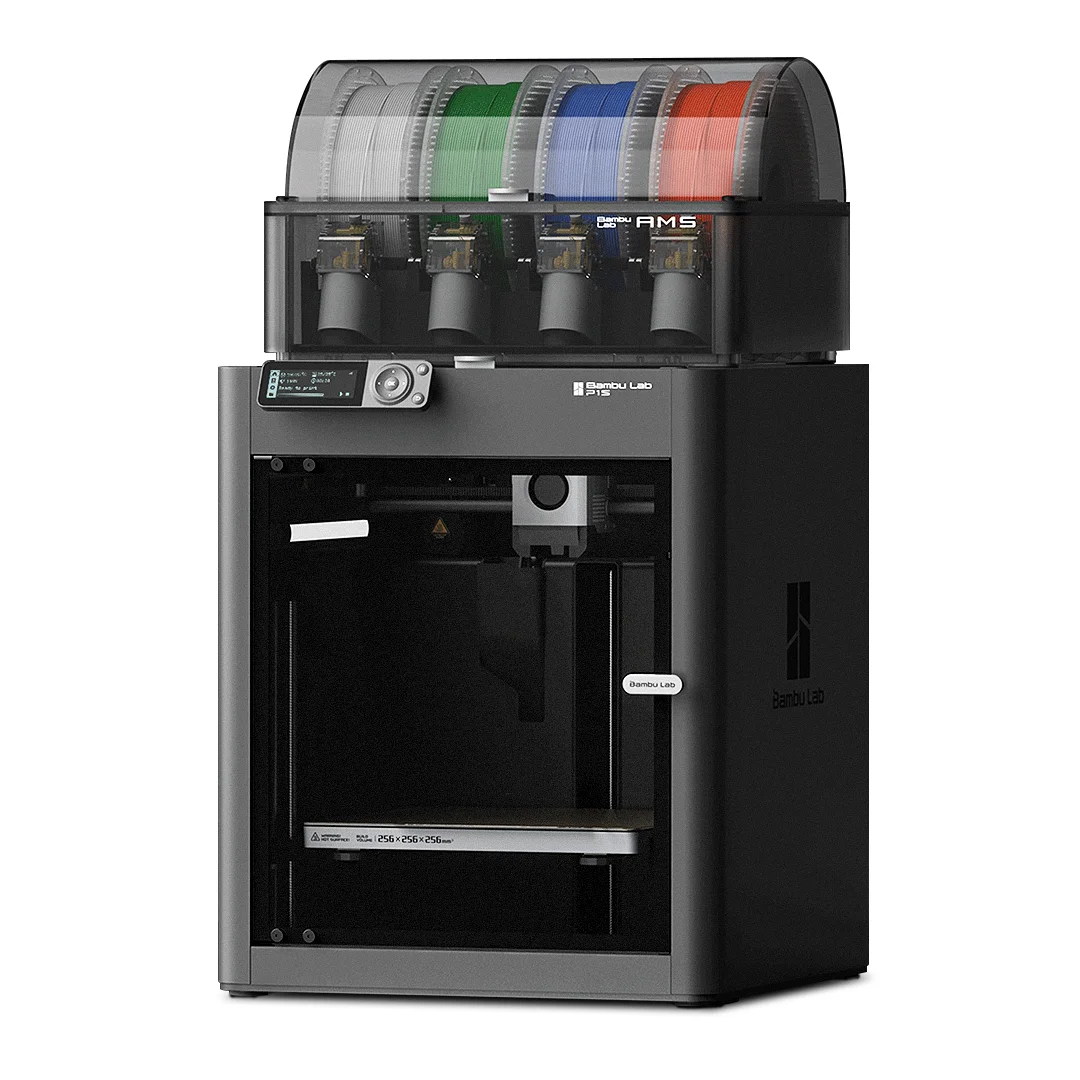Compare Mars 3 PRO vs P1S
Comparison between the best 3D printers
Choose the best 3D printer at the best price. The cheapest 3D printers are here.
Buy a 3D printer here with 3D Fila.
 |
 |
|
| Model | Mars 3 PRO |
P1S[BUY P1S] |
| Printing Material | Resin | Filament |
| Buy Resin for Elegoo Mars 3 PRO | Buy Filament forBambu Lab P1S | |
| Estimated price | $300,00 | $949,00 |
| Manufacturer | Elegoo | Bambu Lab |
| Release Year | 2022 | 2023 |
| Print Volume [mm] | 143x89x175 | 256x256x256 |
| Printer Size [mm] | 227x227x438 | 389x389x458 |
| Weight [kg] | 5,5 | 12,95 |
| Power Loss Recovery | NO | YES |
| Maximum Resolution [mm] | 0,01 | 0,1 |
| Processor | Quad ARM A7 1.2 GHz | |
| Display | Touchscreen TFT 3,5'' | Touchscreen 5'' |
| Power Supply | 350 W | |
| Connectivity | USB | Wifi, Bambu bus, Cartão SD |
| Operating systems | Windows, Linux, Macbook | |
| Date of registration in the system | 2022-11-07 | 2024-04-11 |
| Release date | 2022 | 2023 |
| Extra features | The Elegoo Mars 3 PRO printer stands out for its special features, such as its high printing resolution, which guarantees sharp and detailed prints with 35 microns. It includes a replaceable air purification module, which facilitates maintenance and improves air quality during printing. The device's LCD screen is scratch-resistant, increasing its durability, and a strong point is the uniform distribution of light, guaranteed by a Fresnel lens. This lens ensures more uniform curing of printed objects, contributing to superior print quality. With these features, the Elegoo Mars 3 PRO presents itself as a robust and efficient choice for resin 3D printing. | The Bambu Lab P1S stands out for its out-of-the-box practicality, eliminating the need for manual adjustments with automatic calibrations such as bed leveling and vibration compensation. It features multicolor printing capability through the AMS system, allowing up to 16 colors when connecting four AMS units. With an advanced control algorithm, the P1S offers fast printing speeds without sacrificing quality. Equipped with modern features such as filament end sensor, semi-automatic belt tension, direct extruder, welded frame and all-metal hotend, along with a fully enclosed chamber, the P1S promotes a superior printing experience, supporting a wide range of materials. |
| Support for multiple colors and materials (AMS and CFS) | NO | YES |
Notes * |
||
| Cost-benefit | 8 / 10 | 7 / 10 |
| Hardware | 1.4 / 10 | 6.4 / 10 |
| Tela | . | . |
| Print volume | 3 / 10 | 4 / 10 |
| Performance | 9 / 10 | 4 / 10 |
| [BUY P1S] |
Conclusion |
| In comparing the Elegoo Mars 3 PRO and Bambu Lab P1S 3D printers, several key points emerge, emphasizing their distinct advantages and suitability for different users. The Elegoo Mars 3 PRO offers exceptional detail and precision in printing, benefiting from its high maximum resolution and advanced light distribution technology. It is compact and lightweight, making it a great option for hobbyists or those with limited space. The added features, such as a replaceable air purification module and scratch-resistant display, enhance its usability and maintenance, delivering a high-quality resin printing experience at a more accessible price point. On the other hand, the Bambu Lab P1S is designed for efficiency and versatility, boasting a larger print volume and the capability for multicolor printing, which enables a broader range of creative projects. Its advanced features like automatic calibrations and a fully enclosed chamber cater to users who prioritize convenience and speed. Although it comes at a higher price, the P1S's robust hardware and support for a variety of materials justify the investment for those seeking a professional-grade 3D printing solution. Ultimately, the choice between these two printers depends on individual needs. The Mars 3 PRO is ideal for users focused on precision, intricate designs, and cost-effectiveness, while the P1S is suited for those who need advanced functionalities and larger printing capacity for more extensive or diverse projects. Each printer scores similarly on cost-benefit, but their differing hardware capabilities and performance metrics highlight the importance of aligning the choice with specific user requirements. |

